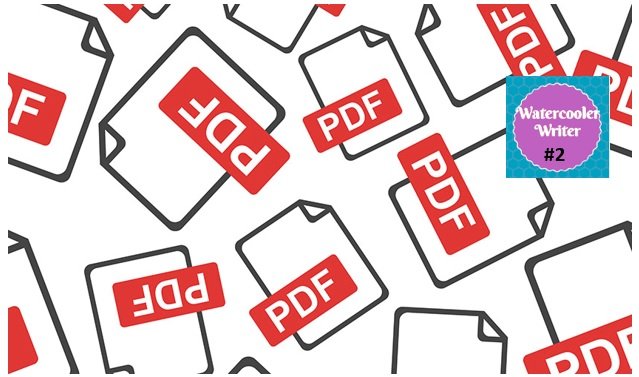Your company is getting ready to celebrate its 50th anniversary, and the higher-ups have decided that a book will be the perfect way to commemorate the occasion.
They’ve also decided that you are the perfect person to act as project manager, writer, and editor.
And they want it ready to send to clients, investors, and employees by the end of the quarter.
But is that a realistic deadline? Where will you get your information? How do you even start on a project like that? How do you know what information to include? What do you do about publishing and printing? What if you’re not really a “writer”?
 Our team of professional ghostwriters and editors have helped dozens of corporate clients research, organize, write, and publish books. We understand the unique challenges that come with writing corporate books, and we know how to keep large projects moving forward.
Our team of professional ghostwriters and editors have helped dozens of corporate clients research, organize, write, and publish books. We understand the unique challenges that come with writing corporate books, and we know how to keep large projects moving forward.
This guide will give you an in-depth look at the process of writing a company history book, from planning and research to writing, project management, and final proofreading.
Big-Picture Planning
Starting a book without planning is like setting off on a cross-country road trip without your trusty navigation app.
You might have a general idea of where you’re going, but you don’t really know how to get there: Are you going to take back roads, or stick to the highways? Are you going to make any stops along the way? Are there any detours or major construction projects that could slow you down?
Before you write a word of your company history book, you need to have a clear sense of where you’re going with your book and how you’re going to get there.
This is the time to sit down with all of the project stakeholders and decision makers and answer the following questions:
Do you have a specific publication date in mind?
Do you want to release the book on, say, your company’s 50th anniversary? Are you planning on giving it out for a holiday gift? Did you want to have it ready for an upcoming conference, trade show, or convention?
Is this date realistic?
Books are big projects — and although every situation is a little different, you should expect the process to take a minimum of six months. Have a tight deadline? Not sure if your target date is actually possible? Now’s the time to start checking with printers and self-publishing companies.
Who will read this book?
Are you publishing this for the general public? Longtime customers or potential clients? Employees only? The intended audience for your book will help you determine everything from the writing style to the type of information you include to the length and format of the final manuscript.
What will the finished product look like?
Is the goal to create a downloadable eBook? A beautiful, heirloom-quality coffee table book, with lots of pictures? A paperback? Do you want a short booklet or a meaty 150-pager?
Are there specific stories that you need to include?
Any interesting stories about how the company got started? How about important milestones in the company’s history? Are there any anecdotes that would be especially interesting to the book’s target audience?
Is there anything you should not include?
Before you start gathering information and conducting interviews, ask about any sensitive stories, proprietary information, trade secrets, and other details that might be best left out.
Who will be responsible for providing final feedback along the way?
Will you submit chapters to the company CEO? To a team of executives and key decision makers? To the VP of marketing? To avoid massive rewrites, you’ll want to make sure that anyone who gets a say has plenty of opportunity to review your work as you go.
Start Researching
Now that you have some of your big-picture details mapped out, you can roll up your sleeves and start gathering information for your company history book.
The good news: You probably have more resources than you think.
In-house records/archives/databases
You may not have to go far to get your hands on some great resources. Some companies make a point of keeping copies of past newsletters, magazine or newspaper clippings, and even old brochures. If you have a marketing department, you might want to start there.
Personal interviews
Talk to current and former employees, retired C-level executives, and current leadership. If your company is relatively young, you might be able to speak with company founders.
New to interviewing? You don’t have to be a seasoned journalist to conduct a great interview. Here are a few ways to make sure it’s a success:
Set a firm -- but flexible -- deadline. Your interviewees are busy people, and they have full schedules. To ensure that they are able to make time to speak with you, send them an interview request as far in advance as possible. Give them a few options for days and times, but don’t give them an indefinite amount of time (else they may reschedule until the end of time). Try something like, “We need to have our interviews wrapped up by MM/DD, and I am available on Monday, Wednesday, and Thursday from 8 AM to 3:30 PM -- what works best for you?”
Respect your interviewees’ time. Dial in or show up for the interview at the scheduled time. Share your list of questions at least a day before the interview so your interviewee has time to gather his or her thoughts. Tell your interviewee how long you think the interview will take (this will depend on the questions but you might want to block out 45 minutes to an hour). Don’t go over your allotted time. If you have follow-up questions you can always email or call. And be sure to thank them for speaking with you.
Ask open-ended questions. The goal is to get your interviewees talking. Avoid asking questions that your interviewee can answer with a single word or a simple “yes” or “no.” So, for example, instead of asking “Have you worked here long?” try something like, “Can you tell me about your history with the company?” Or instead of “When was the company founded?” you could ask, “How did the company get its start?”
Prepare your questions ahead of time. Write down at 5 to 10 good questions that will get your interviewee talking. More than likely, the conversation will spin out naturally from there, and you’ll add questions as you go (in fact, this should be the goal of your interview) -- but written questions will help you stay focused if you’re nervous or and it’ll give you a way to keep the conversation going if your interviewee is a bit reserved.
Record the interview and take detailed notes. Record phone calls and face-to-face interviews (ask permission, of course!). Take written notes, too -- it never hurts to have a backup.
The internet
You might be surprised by how much information you can get with a quick Google search. Be sure to check your company’s website (especially their “About” page), and check out the digital archives of local newspapers, too (many newspaper archives have paywalls, but there are a few decent resources out there, like this one and this one). If your company is very large or very well-known, it wouldn’t hurt to check national publications like the New York Times. A larger company may also have a Wikipedia page.
The local library
It’s kind of old-school, but the library in your company’s city can be an excellent source of background information. Most public libraries have extensive digital (and even microfilm!) newspaper archives, and some even have books on local history, which can provide a snapshot of what was going on in the community when your company got there. Since many libraries have massive newspaper archives, it might be helpful to start your search with a few key dates (like the date the company was started or any significant anniversaries or milestones) or names (the founders’ names).
 Tip: Don’t forget the visuals! When you start doing your research, you should also start keeping a file of photographs and other visuals (tables, infographics, etc.) that you might want to use in your book. One great potential source of photos: Interviewees. Ask everyone you interview if they have any relevant photos that they’d like to share. And remember, the publisher/printer will need high-quality, digital copies of all images. If you’re working with hard copies of old photos, make sure you have access to a scanner.
Tip: Don’t forget the visuals! When you start doing your research, you should also start keeping a file of photographs and other visuals (tables, infographics, etc.) that you might want to use in your book. One great potential source of photos: Interviewees. Ask everyone you interview if they have any relevant photos that they’d like to share. And remember, the publisher/printer will need high-quality, digital copies of all images. If you’re working with hard copies of old photos, make sure you have access to a scanner.
Create a Timeline
Once you’ve knocked out the bulk of your research, it’s time to put it all together and see what you have.
Gather your interview recordings, news stories, and handwritten notes, and start putting everything together in chronological order.
This will help you get a big-picture sense of important dates, major events, and key turning points in your company’s history.
Creating a chronological timeline will also help you identify any major gaps that may require more research — for example, you might realize that you don’t have any information about, say, the early 1980s or that you have no idea when the company’s last big merger happened.
And don’t worry, it’s totally normal to find small holes in your timeline, even if you’ve been incredibly thorough in your research.
The good news is that any additional research you do will be very specific, so you’ll know exactly what you’re looking for.
Once you’ve got a solid timeline, run it by all of the decision makers and stakeholders on your “final approval” team to make sure you’re all on the same page and to give them the opportunity to weigh in and suggest events to add, remove, or change.
It’s never too early to think about printing and publishing
Our clients are often surprised to learn that it can take several months to get a book printed. That’s why you should start considering your options as early in the process as possible. If you’re planning to work with a specific publisher or designer, it’s a good idea to start communicating with them early about timelines, pricing, and options for things like design and layout.
If you’re planning to self-publish, start narrowing down your options: There are a ton of self-publishing companies out there, and they vary in price, quality, turnaround time, and the level of service they provide (some are pretty bare-bones -- they print what you send them, with no bells and whistles; others provide design services, editing, and proofreading). Whatever publishing option you’re considering, it’s not a decision you want to make at the last minute.
And if you have a specific budget in mind, it’s important to remember that pricing can vary widely, depending on several factors: In general, hardcover books are pricier than their softcover counterparts. Color photos are more expensive than black-and-white. You’ll pay more for thicker, glossier paper and unusual sizes.
Decision time: How will you tell your company's story?
There’s nothing wrong with telling your story chronologically, starting from the company’s founding and moving forward from there until you get to the present day.
But that’s not the only option.
Here are a few other options to consider:
An oral history
This type of book is typically less chronological and feels more like an anthology of collected personal narratives – but if you ended up with a ton of amazing interviews after your information-gathering phase, consider using large, verbatim portions of the interviews and letting your interviewees tell the company’s story in their own words.
A series of vignettes
Again, this is more like a set of standalone stories than a traditional chronological approach, but a collection of vignettes — focused on key people, important milestones, and fascinating bits of company history — is a great way to keep things interesting.
A coffee table book
Larger and more image-heavy than a traditional book, a coffee table book is ideal if you want to showcase iconic products or designs. Coffee table books are typically less reliant on text, too, which makes them a good option if your research didn’t turn up as much information as you’d hoped.
Write a Sample
Now comes the fun part. You’re ready to start writing.
We suggest starting small, with a single story.
Pick something that feels self-contained; something that you can write about in three to five pages — and make sure it’s something that you’ve got a ton of information about.
Write three to five pages, and then share it with your stakeholders/decision makers. Ask them to weigh in and provide feedback. Here are a few things to ask them:
Do you like the writing style?
Do you feel like the writing “flows” — meaning, did you enjoy reading it? Did it sound natural?
Is it easy to understand?
Is it clear?
Is there anything you’d change?
And don’t get discouraged if your team has a lot of feedback and suggestions for you at this point!
We’ve been doing this for years and we’ve learned that the “sample” phase can often involve two or three rounds of back-and-forth edits and rewrites before everyone is happy with the draft.
But the good news is that once you’re all on the same page, style-wise, the process tends to pick up considerably.
Keep going -- and bring reinforcements
 Once you’ve worked through any feedback and edits from your team, you can dive into the actual writing. In general, we suggest aiming for at least a chapter a week until you have a complete draft — but you should check with your team and your publisher/printer first. And if you find that the chapter-a-week schedule is a bit overwhelming, don’t be afraid to bring in help!
Once you’ve worked through any feedback and edits from your team, you can dive into the actual writing. In general, we suggest aiming for at least a chapter a week until you have a complete draft — but you should check with your team and your publisher/printer first. And if you find that the chapter-a-week schedule is a bit overwhelming, don’t be afraid to bring in help!
Writing can be a full-time job (trust us, we know).
If you’re having trouble adding a company history book project to your already heavy workload, consider hiring a professional ghostwriter or editor to help you keep things on track and ensure that you end up with a complete draft by your target date. (Not sure what to look for in a ghostwriter? Here’s a guide to help you get started.)
Whether you decide to fly solo or bring in a ghostwriter, here are a few tips to help you soldier on to the end:
Get feedback every step of the way
Make sure that your team has the opportunity to review each chapter – that way, everyone has a chance to weigh in, and everyone will know what to expect from the completed draft.
Stay focused on the big picture
Now is not the time to channel your inner high school English teacher. Don’t worry about correcting typos or hunting for grammar or punctuation errors. At this stage in the process, it’s more important to get the story down on paper and ensure that all of the pieces are in the right place. You can go back and proofread once you’ve got the big stuff worked out.
Don't be afraid to leave placeholders
As you write, you’ll likely come across a few missing details. What was the original CEO’s first name? What year, exactly, did your company expand into the Midwest? How many widgets did your company sell during its first decade in business? You’ll have plenty of time to hunt down stray facts once you have a complete draft. For now, use a placeholder — like “XX” or “INSERT INFO” — and move on.
Read your draft front-to-back
Once you’ve got a complete draft, make sure that you and your team members and decision makers have a chance to review it as a single, front-to-back book. You might find that it makes sense to flip chapters around, delete repetitive sections, or even expand sections that feel a little skimpy.
Printing and Publishing
Once you have a complete, approved draft of your company history book, it’s time to need to hand it over to the publisher/self-publisher/printer.
By this point, you’ll probably have worked out most of the details — such as hardcover vs. softcover, color vs. black-and-white, and so on.
But here are a few tips for ensuring that this stage goes smoothly:
Talk about proofreading
Don’t assume that your publisher or printer proofreads the manuscript. Some publishers and printers — especially the higher-end options — offer proofreading services, either as part of their publishing service or as a separate, standalone service. But if you go with a more bare-bones self-publishing or printing service, proofreading might not be a service offering at all. Either way, we suggest two rounds of proofreading: First, proofread your final Word document before you send it to the publisher/printer. Then, proofread the formatted, pre-print PDF after you get it back from them (but before you give the approval to go to print).
Provide all materials on time
This sounds really obvious, but it’s worth mentioning: If you want to ensure that your book is finished on time, you’ll need to make sure that the publisher has all of the files they need — including final Word documents, photos, and graphics — when they need them.
Keep the lines of communication open
Make sure to respond quickly to any communications from the printer/publisher. Typically publishers are on really tight deadlines; responding to their inquiries quickly will help ensure that things stay on track. And, if you have questions or concerns during any part of the process, voice them right away.
 *Before recording an interview, be sure to check out your state’s laws on recording conversations. Also—check out this great blog for more interview tips and suggestions!
*Before recording an interview, be sure to check out your state’s laws on recording conversations. Also—check out this great blog for more interview tips and suggestions!











